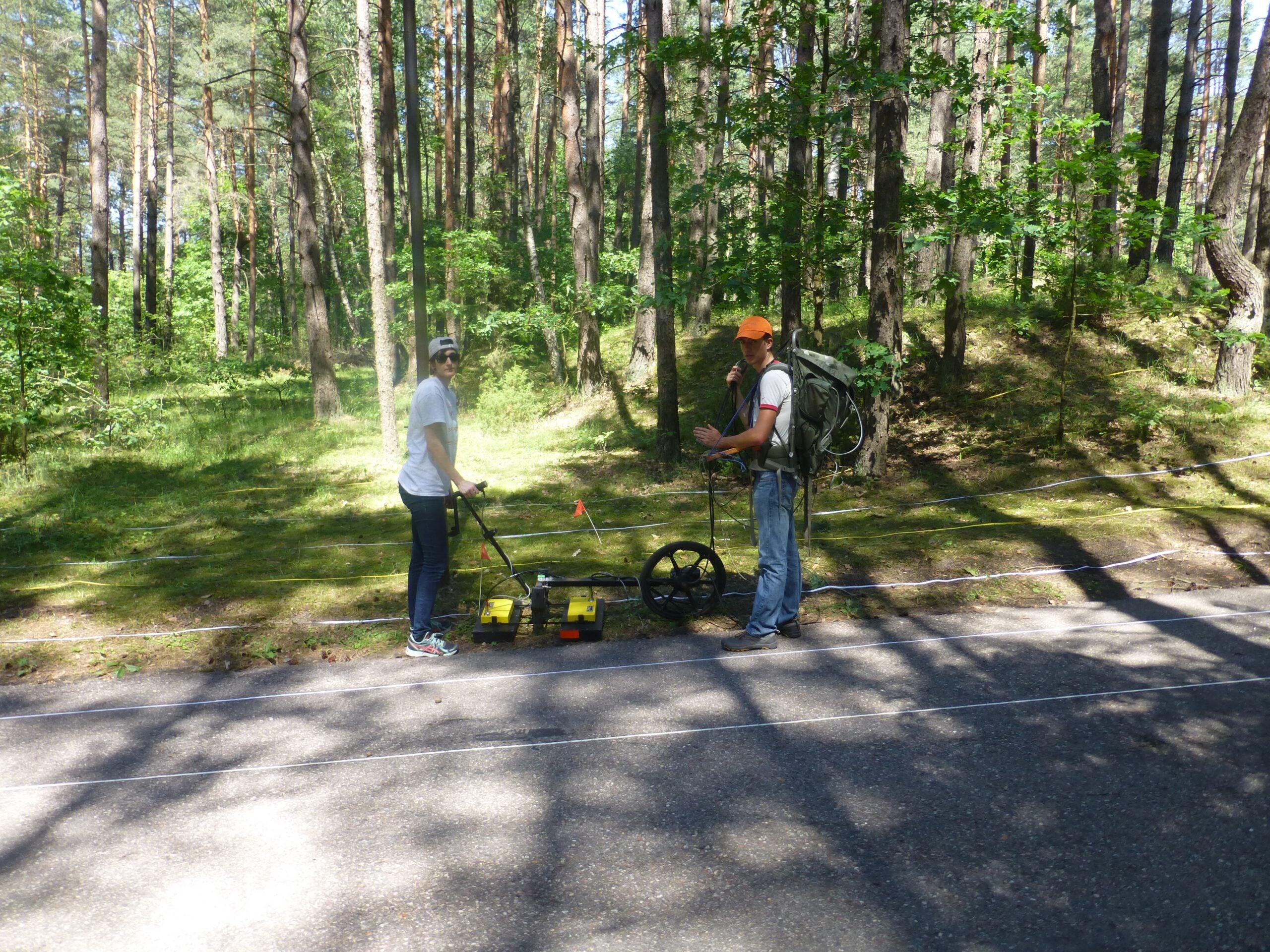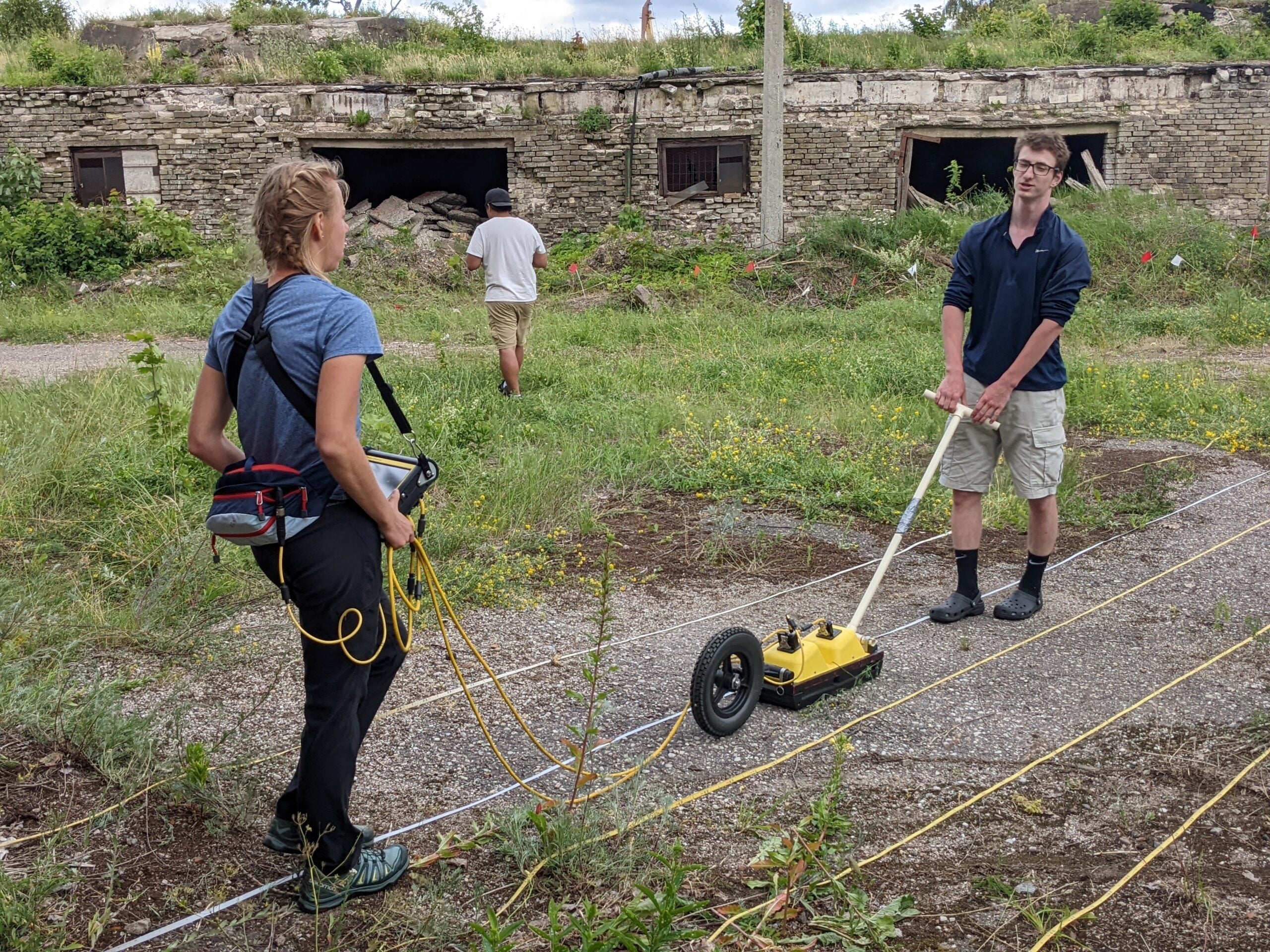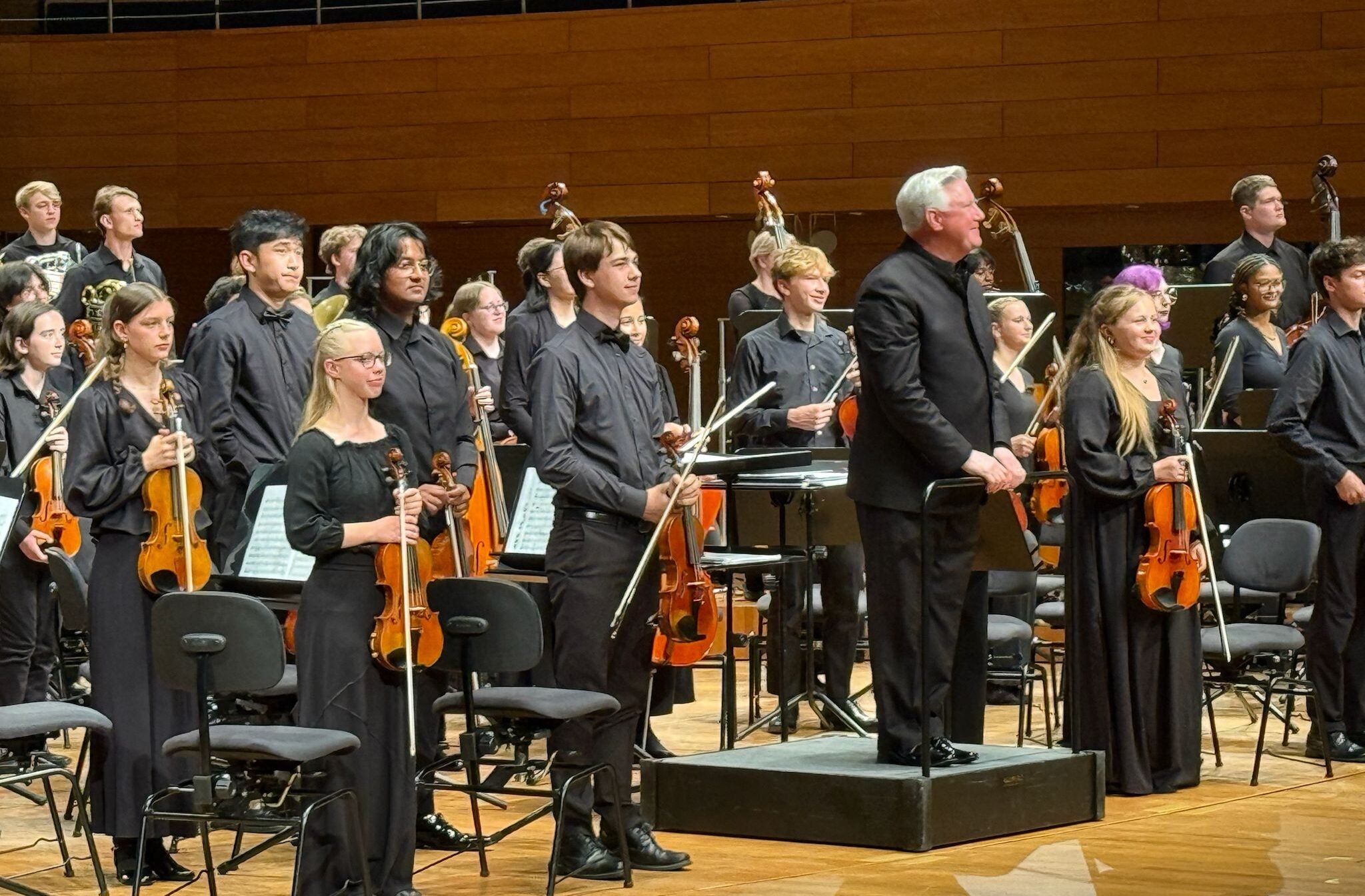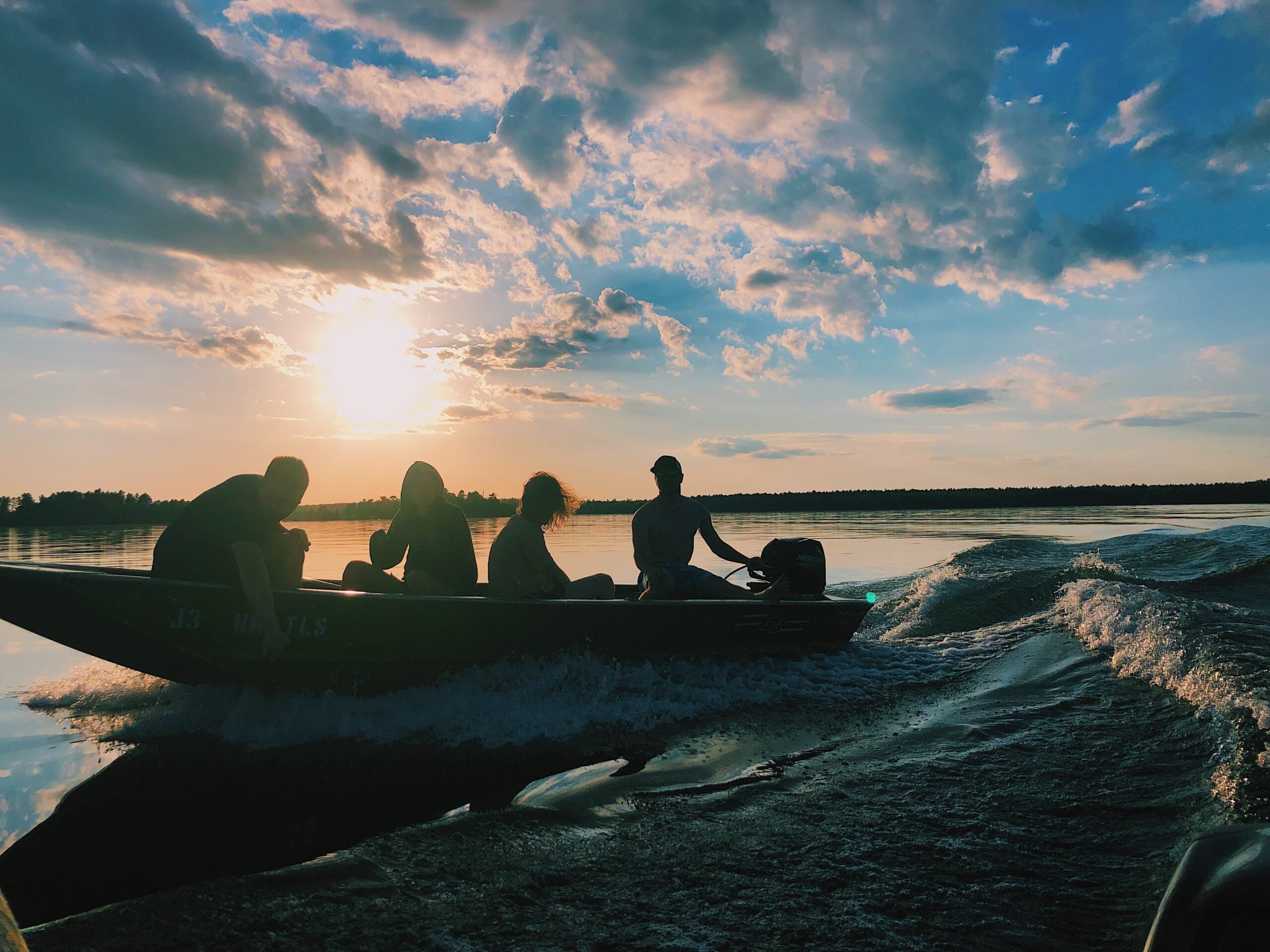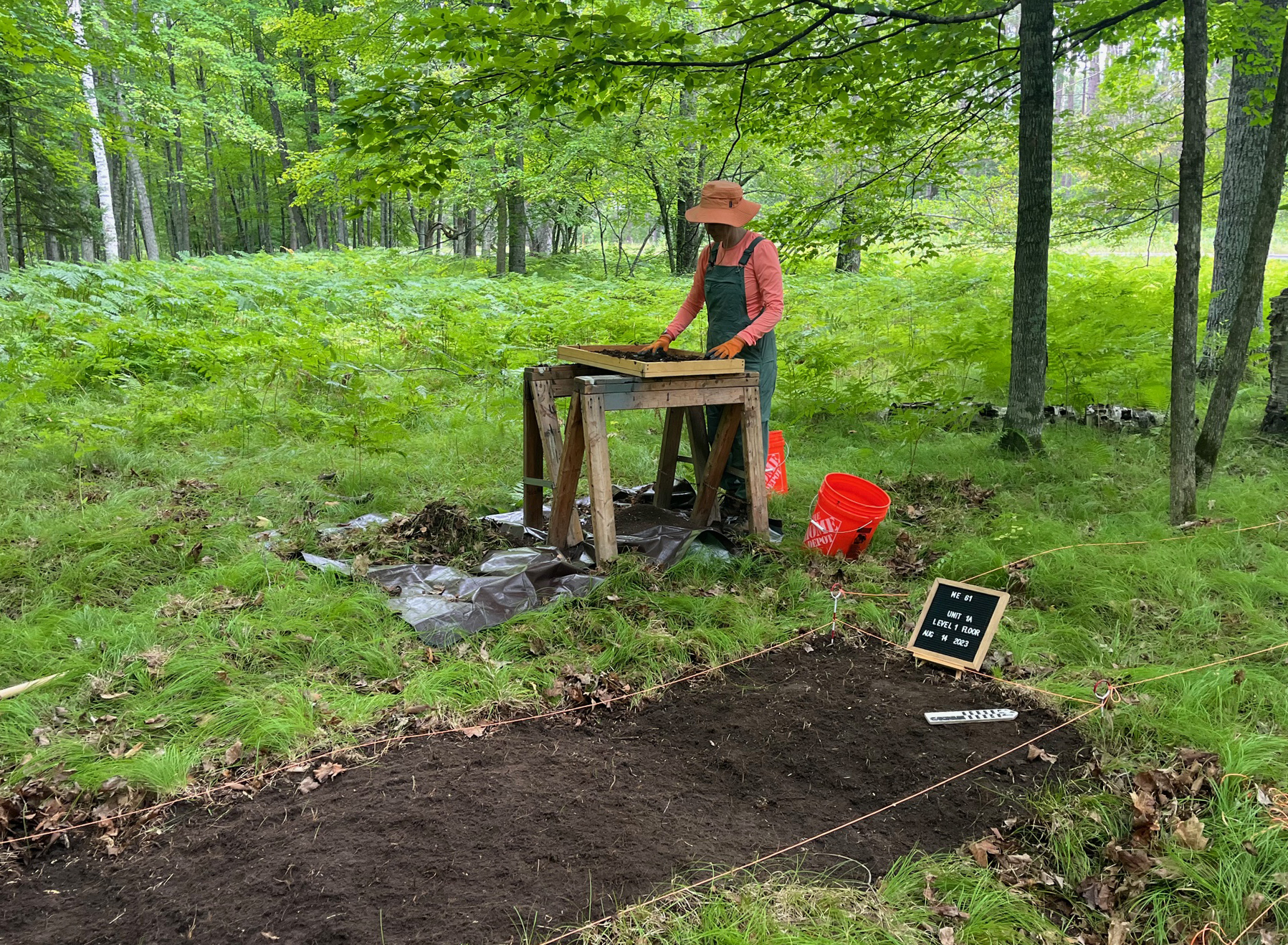An international research team of geoscientists and geographers recently made a remarkable find in Lithuania. It’s a 100-foot tunnel, dug mostly by hand at night by Jewish prisoners who were anticipating execution during the Holocaust 72 years ago. University of Wisconsin-Eau Claire geography professor Harry Jol and four of his students used ground penetrating radar to find the passageway, so as not to disturb this massive burial pit where up to 100,000 people were killed — their bodies dumped or burned during the Holocaust.
Jol and one of his students, James Erickson recently spoke with Wisconsin Public Radio about the find:
Wisconsin Public Radio: You’re recently back from Lithuania. Your technology was successful in locating this escape tunnel almost right away. How did you do it?
News with a little more humanity
WPR’s “Wisconsin Today” newsletter keeps you connected to the state you love without feeling overwhelmed. No paywall. No agenda. No corporate filter.
Harry Jol: We’re part of a larger collaborative international team that’s been working 20 years at different sites. In this particular case, we used electrical resistivity tomography locating 360 degrees around a burial pit. By putting those electrical pulses into the ground, we were able to pinpoint some areas that were different than the local area. It’s all sandy in that area. We came, located that area, and used ground penetrating radar to try to do 3D imaging of those locations. And we’re still processing those data sets.
WPR: Tell us about the tunnel itself. What size is it and what would these 80 prisoners do to get through it? Would they be crawling?
HJ: They are living in dorm-like conditions in one of these large pits. You’d have a Nazi guard looking down on them as they were sleeping in the evening. What they had to do was they had to dig down out of the pit because there were walls around it. Using spoons, cups and things that they had or found on the bodies they were burning, they would take those and dig at night in a very quiet time period. It was very dark. You had this engineer who said we can do this. Essentially, the largest they could go was 60 cm by 70 cm, that’s roughly 1.5 to 2 feet – just enough to get a body through. It must have been very claustrophobic.
WPR: What is the terrain like where this tunnel ends? What would the prisoners see when they emerged?
HJ: Essentially, they were trying to get to a low point because they were going in and out in shackles to where they were bringing up the bodies and burying them. They were known as the “burning brigade.” They looked for lower sites at that area where they could come out of on the tunnel. Again, this tunnel is 100 feet long, so you have to do a lot of engineering and figure out where this is going. It’s supposed to be a lower area, so that when they came out at the darkest night of April that they were planning for, and then they could sneak off or crawl through.
WPR: Of the 80 prisoners, just a dozen were able to escape through this passageway. Do we know if they all made it through the tunnel?
HJ: What we know is based on reports from the 11 who did survive the war. We know that 40 basically made it out. There was some noise. It was picked up and then the shooting started. Out of those 40, 12 escaped and 11 survived and made it to the (Jewish) partisans. We also know from the reports that have been released now that there are the survivors’ kids or grandchildren who have documentation of some of these, and we’re working through those right now.
WPR: How important were these stories — these firsthand accounts of this tunnel? Was that helpful to you and your team trying to locate it?
HJ: It was very helpful because in the “Holocaust Issues,” a lot of these are firsthand accounts or accounts people have written. Some of these aren’t published yet. But they directed us to where it was, how they started digging the tunnel, that there was collapse – they had to use wood to try to shore up the sand tunnel as it was going through – how they escaped. The tunnel did take a little dogleg and we had various stories about why that potentially occurred – from that they encountered bodies that were buried in the sand to that they wanted to get to this lower area when they were coming in and out. We’re working through all these pieces of textual information and discussions that are happening, and we’re trying to use science now. We know that in the next 10 to 15 years, the Holocaust survivors are going to have passed away.
WPR: What was that feeling like, the emotion that passed through you, when you look at your equipment and you realize you had found the tunnel? It was there underneath your feet.
HJ: You realize as you’re at that site, 100,000 people were killed underneath your feet. And then they were burned because as the Soviets were coming, the Nazis realized they were going to lose the war and wanted to burn all the evidence of the war crimes of killing all of these individuals individually. You have this moment, or this continual thing of the horror that happened that how in human history all these people could be killed. But also we can flip that. I take a look at this is hope, this is passion – people wanting to survive in the midst of this horror that’s going on. I think what we have to do is pass this along saying there is hope. These survivors who came out of this said we did get out, we survived, and we’re going to tell our story.
WPR: What will happen to this tunnel? Will Lithuania do anything to protect or preserve it?
HJ: We pass this information on to the Jewish museum at those sites. We pass this information on to the local archeologists. It’s their decision on what to do with this. They’re looking at doing an archeological dig and to show where the tunnel is and potentially put a glass plate over the top of it to provide the evidence that here’s another story of the horror and the hope that visitors who come to this site can see.
WPR: You’ve brought a student with you, James Erickson, senior geography major from Webster, Wisconsin. What was this experience like for you to work on a mapping project of this magnitude, the Holocaust, and then find what you were looking for?
James Erickson: To be honest, the first few days at this site it was just like any other project – setting up a survey grid and then using the equipment to collect data. It wasn’t until we were there for a couple days where I really started seeing the significance of our work. With ground penetrating radar, we run lines back and forth across this 40-meter by 40-meter grid. On the edges of the grid, there was nothing. The ground was normal. But then when we started getting toward the center, I could see it on the computer screen the machine just beeping along – normal ground, normal ground – and then suddenly the soil underneath is disturbed and it’s just like right there in front of me. I’m literally walking over top of a site of a massacre. It’s a little bit of an emotional experience there, I suppose.
WPR: I want to ask you, Harry Jol, has mapping this escape tunnel informed you in any way?
HJ: We’re building a science to try to deal with issues such as the Holocaust. Every time we get out in the field doing this, you have a new group of students, a new group of projects you have to solve. And this one is very significant. Using science and trying to get into this human history and trying to say, OK, these things did happen. What can we do together to try to solve problems in the future and continue that?
The work of professor Harry Jol, his students and the international research team will be part of a documentary being produced by the PBS science series “NOVA.” It’s slated for broadcast sometime next year. Jol’s work was funded through the International Fellows program at UW-Eau Claire.
Wisconsin Public Radio, © Copyright 2026, Board of Regents of the University of Wisconsin System and Wisconsin Educational Communications Board.
